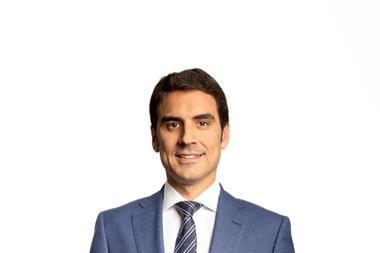Founded in 2004, the Pan European Property Common Interest Group (PEPCIG), whose membership comprises senior property researchers from about 50 organisations across Europe, welcomes a new chair, Michael Haddock. Nick Tyrrell, the outgoing chair, and his successor set out their thoughts on the achievements of the past, the challenges ahead and the broader institutional market issues to Martin Hurst
What have been the key achievements of the property research community during the tenure of the outgoing chair? Have there been any disappointments?
Nick Tyrrell: During my tenure I'd say there have been two key achievements. The first IPF pan-European forecast survey was published; this was something in which PEPCIG played both a driving and a consultative role. Moreover, PEPCIG provided a forum through which the executors of the survey were able to reach out to all major potential contributors. Secondly, there is now genuine momentum in the industry towards sharing and homogenising market data. There's nothing public yet but please watch this space. I'd like to think that PEPCIG has been a major driving force behind this.
The impetus behind both these initiatives was in place well before my tenure, however. I'd like to think on a more personal level that I have made PEPCIG a little more sure of its identity and purpose, and also put the whole thing on a sounder basis by regularising the meeting programme.
I'd say the main disappointment has been how slowly the industry has moved towards the set of common data definitions that PEPCIG ‘blessed' 18 months or so back. Of course, that may partly be our fault; we've tended to be a little publicity-shy up to now.
Michael Haddock: I think that the ‘consensus forecasts' are the one thing that we can really point to and say that without the regular PEPCIG meetings this either would not have happened at all, or would have taken a lot longer.
There are surprisingly few opportunities for pan-European researchers into the direct real estate market to meet up and share techniques and experiences. Many of the members of PEPCIG work for organisations that would consider themselves direct competitors and yet there is quite a strong spirit of co-operation once you get them in the same room.
I think that this is fostered by the fact that it is a profession with a fairly short history. Ten years ago there were only a handful of people doing this type of work and the difficulties now are nothing compared with the problems that pan-European researchers faced then. I think that this means that those who have been in this field for some time - which most of the PEPCIG members have been - are still more interested in making pan-European research as a whole more effective than competing with one another.
How will the challenges of the new chair differ from that of his predecessor?
NT: In many ways the first two chairs have been able to pick the ‘low-hanging fruit', dealing with the inevitable growing pains of a new organisation and picking up on some of the easier - in concept, if not in execution - issues in direct real estate analysis, such as the lack of common data reporting standards. These issues have been around for years and it was just a question of bringing PEPCIG's influence and advisory capacity to bear on them. Future chairs - and I know Michael is already on to this - will need to look at how data providers and the research community are dealing with brand new topics in the real estate field, such as derivatives and securitisation.
MH: In my view the challenges remain much the same - maintaining momentum in the projects that we have been pursuing and maintaining momentum in the organisation by finding new issues to get involved in. At the same time we have to bear in mind that this is all done in members' ‘spare time'.
We made a decision right at the beginning that PEPCIG was intended as a ‘common interest group', that is a group of people that got together occasionally to discuss issues of common interest. As a result it has no membership fees, and no financial structure.
This means that we rely on members to progress projects either because it can be justified as part of their regular workload, or in their spare time. We also rely very heavily on the support of others who recognise the value to the industry that a body such as PEPCIG can offer. IPD in particular have been very supportive in providing accommodation for some of our meetings and helping to prepare minutes of meetings. IPF have also been instrumental in implementing the consensus forecasts.
Not only would it have been impossible for an individual member or group of members to have found the time to progress this project, but it would also have been practically impossible to get members to pool their forecasts without an independent third party to process the results.
Are there any ways in which the property research community could work together more effectively? For example, do all the industry associations co-operate as closely as they could?
NT: Yes - and no, they don't. I'll admit that when we first started PEPCIG I had some concerns that we were setting up yet another industry body and that it might end up just adding to the confusion. Now that we have a clearer sense of purpose I think I'm over that, and in fact I think PEPCIG has a role to play in bringing all these people closer together. This is something that the group is working on right now.
Of course, there's a limit to how far representatives from competing organisations are going to be willing to share ideas and information. PEPCIG will never be a talking shop on strategies and market trends - there are plenty of forums for that anyway. It's much more infrastuctural than that.
MH: The answer to that is always ‘Yes' but I think we do pretty well. You have to remember that at the end of the day a lot of us are competitors, so there are many areas where it is difficult to co-operate without undermining a competitive advantage. However, there are many examples of situations where because it has been recognised as in the common interest competitors have managed to work together. The Research Forums in the CEE or Immostat, for example.
We have been less progressive when it comes to cross-border co-operation, although it is genuinely harder to organise. That is not going to get any easier when we start trying to organise global agreements on issues such as definitions.
In what ways have the challenges facing institutional investors investing in real estate changed during the tenure of the outgoing chair, and how does the incoming chair believe that they will change in the future?
NT: Again, this really boils down to the ever-richer nature of real estate capital markets. Fifty years ago there was just direct investment, at least so far as anyone other than banks was concerned. Thirty years ago there was direct investment and property companies. Ten years ago we could choose between direct investment, property companies and indirect unquoted funds. Now we have these plus REITs, derivatives, mortgage-backed securities, mezzanine debt... All these types of instrument have to be analysed in developing a real estate strategy.
The challenge is that many of these newer asset types have little or no data associated with them. Of course, it's also a great opportunity since it gives us the chance to directly influence the type of data that's produced and the way in which it is delivered. That's exactly the sort of thing PEPCIG was set up to do.
MH: Looking ahead, probably the biggest challenge facing pan-European investors is how they deal with a change in market conditions.
The vast majority of pan-European investors have been in the field for a fairly short period of time, and most of that period has seen very strong market conditions. There was a downturn in the market around 2002/03, which in some countries was substantial, but averaged across Europe as a whole it was fairly mild.
I'm in no way forecasting a downturn in the market, but one thing that history tells us is that at some point in the future there will be one and it will be interesting to see how the structures that have been put in place over the last five-ten years cope with such a change in market conditions.
The other challenge - as Nick points out - is the sheer complexity of the market these days. Not just the outward structures of direct, indirect, listed, unlisted and derivatives, but also the much more complicated finance arrangements that exist to support them.
As someone who has come from a background of 20 years in the real estate industry, I find myself having to learn a whole new vocabulary to cope with concepts that simply didn't exist a couple of years ago and I am sure there are many people in the industry who feel the same.
How well have institutional investors risen to the challenge of investing in real estate?
NT: I think institutional investors are hugely more sophisticated in the approach to real estate now. The really big investors - the PRUPIMs, the ABPs - always have been of course. But it's the small and medium-sized funds that are changing, moving their real estate exposures across borders, moving into indirect vehicles, and analysing the role of the asset class with the same scientific precision that was formerly reserved for equities and bonds. The research community - on both the agency and investment management sides - has a huge enabling role to play in the process.
MH: I am frequently amazed at how quickly the industry has come to terms with the changes that have taken place over recent years.
What advice would the outgoing chair give to his successor?
NT: Two cardinal rules: Always keep a tight grip on the meetings, and always allow three times as much time for discussions as you think it's going to take.
Michael Haddock is also director of research and consulting at CB Richard Ellis. Nick Tyrrell is head of research and strategy of the European real estate group at JP Morgan Asset Management












